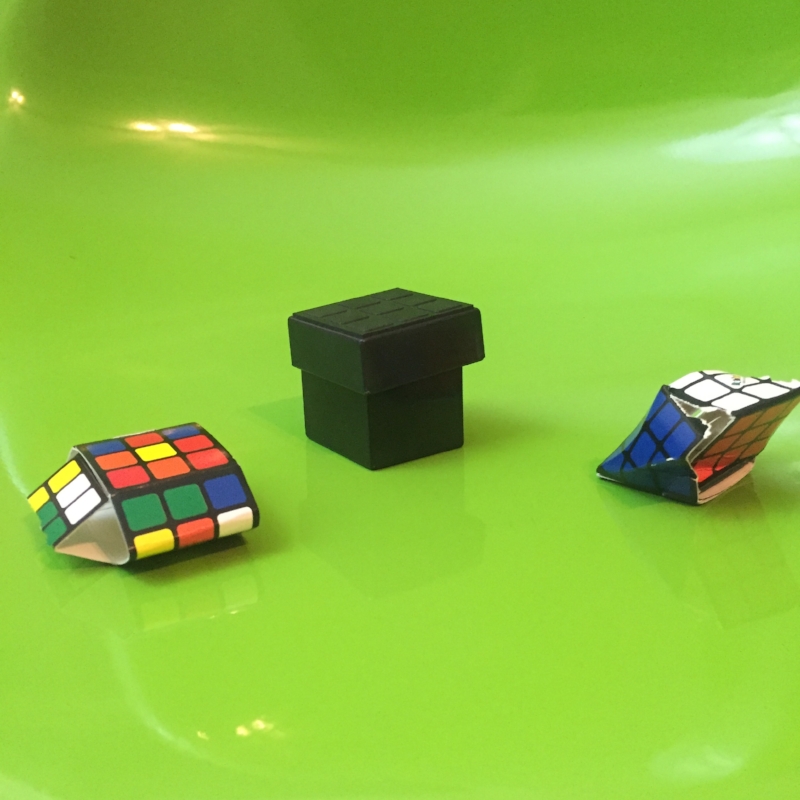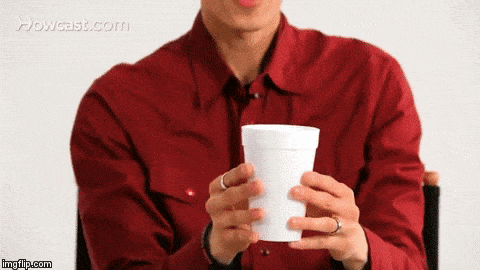A Critical Examination of a $5 Magic Set
/The other day I was in the store Five Below. Do you have these stores near you? If you don't, how do I explain them.... You know a dollar store, where everything costs a dollar? Well, Five Below is a store where everything costs 5 dollars (or less). Hmm... that wasn't that difficult to explain at all.
Unlike many dollar stores, which are often dreary and a little gross. Five Below is usually bright and well organized. The other difference is that Five Below is more aimed at young people.
Now, what it has in common with a dollar store is that you walk in there and say, "I can't believe this is so inexpensive!" And then you buy the thing and take it home and you're like, "No. I can believe it. This is a hunk of shit."
I go there for their candy selection because I have the palate of an 8-year-old. I also like to check out their game section which is always filled with the most moronic stuff. It's almost like some game magnate died and left the company to his mentally deficient, lunatic son. And now the other board members of the game company are producing all of his horrible ideas in hopes of activating some clause in the contract that allows them to take over the company if the stock price dips below a certain level.
So this dingbat is sitting at the head of the table, with a mouth full of crayon, and he's like, "Uhh... how 'bout a net you put on yer head and toss emojis into!"
And they're like, "You got it, boss."
Then he's like, "I know! Let's make beer pong for when you're taking a dumpy on the toilet."
And everyone is like, "That's gold. We'll start production today."
And so it was, while traversing the game aisle, I found this magic set.
It's Rubik's, it's Fantasma Magic, these are two legit entities. Surely it can't be that bad right?
Oh, it can.
Are you really going to review a $5 magic set? That seems kind of petty.
Uh, yeah bitch, I am. Go read another site. Let me have my fun.
Here's how I imagine this going down.
INT. - FANTASMA OFFICES - DAY
TEDDY, the creative director for Fantasma sits at his desk, pushing a pen through a dollar bill. CARLA, the CEO of Fantasma walks in.
CARLA
Great news. The Rubik's licensing deal came through. I need 50 ideas for the set on my desk.
TEDDY
You got it. When do you need them by?
CARLA
Six minutes.
[Three minutes later.]
CARLA
I lied, I need those ideas now. What do you got?
To say there was no thought put into this set is an insult to the brain-dead.
I should have had some idea what to expect from this image on the side of the box.
Yes, that's right. They took the normal plastic set of cups and balls and called it "Rubik's Cups and Balls." This was their innovation.
I'll tell you what seduced me a little. It was the image on the other side of the box. The Mental Cube Box. "Read your friends' minds...know what color they chose!"
I assumed this was some version of the Color Vision trick, but it seemed like there was some sort of twist to it. Look, the cube goes in mixed and comes out solved (with the spectator's thought of color face up?). That actually sounds like it could be pretty cool. Well... as it turns out, although the pictures are labelled 1, 2, and 3, they're actually two different tricks. Pics 1 and 2 are from one trick and picture 3 is the first picture from another trick which, apparently, takes place on a planet that has a number system based on factors of three.
I'm not an idiot. I wasn't expecting this to be a bunch of good tricks for $5. What I was expecting was one good trick, and then a bunch of trash. But no, this was 100% trash.
The other thing that made me get it was where it says on the box, "Produce, Vanish, and Transform The Cube." Surely there would be at least one half-good idea for doing such a thing in the kit. But no, there isn't. In fact, I'm not even sure what "cube" they're referring to in that statement. Would it surprise you to learn that of the "50+ tricks" the box advertises, not a single one of them uses an actual Rubik's cube?
Here's what you get in the set:
1. The aforementioned cups and balls.
2. A production box with one wildly idiotic design choice for a set based on the Rubik's Cube.
That's right, it's not a cube. It's the ever famous Rubik's Rectangular Parallelepiped.
3. A Rubik's paddle trick where the cube goes from mixed up to solved. This is fine. For a kid's trick, I mean.
For some strange reason, they flipped the orientation of the cube from one side to the other, as if to emphasize that it's not changing, but instead being turned over. While it's not the sort of thing I think someone would notice in performance, it's something that could register subconsciously as not right. And at the very least it's a dumb, unnecesarry decision.
4. The Color Vision variation which you can use wise one of the two included cardboard cubes.
Except you can't. The color vision box is supposed to have a perfectly cube shaped bottom portion so it can be rotated without it being noticed. This isn't a small detail... it's how the goddamn trick works. But they screwed it up and gave us a box that was shorter than it is wide, so when you rotate it and put the lid back on, it hangs off. So you can see something is weird from just a slight angle.
You would think when partnered with Rubik's you would have some understanding of how to make a cube shape. And if not, surely one of the dumb apes at Fantasma could have placed a call to the Rubik's company to get their help with the concept of squareness.
5. Out-to-Lunch Cards
This was to be my saving grace. Even if everything else in the kit sucked, I knew I could use these OTL cards as an adjunct to some other Rubik's trick I can do. For example, I could have them sign a card with a mixed up cube, solve a cube in real life (the regular way or magically) and then have the image they signed now solved as well. Or I could do it without a cube. Have them sign the mixed up cube card, take it back, start folding up the card a few times, back and forth as if I'm somehow "solving" it. Then I unfold the card and the cube is solved. That could be a fun, quick little trick.
So, if nothing else, at least I have that.
No... no, I don't.
The geniuses at Fantasma decided not to have the image transform from an unsolved cube to a solved one (you know, the ONLY thing you do with a Rubik's Cube). Instead it goes from an unsolved cube to this shit...
A bunch of little cubes in the air. Great. That makes sense.
Now, you might say, "Okay, Andy, those 5 tricks suck, but what about the other 45 tricks in the set?"
Well, they might have fudged that "50+" trick description just a little. For example, each step of the Rubik's Cups and Balls is considered a different trick. Just the set-up for the trick is considered the 8th trick in the book.
Via that technique they stretch these five tricks into 25. The other 25 are made up of dumb classics that have nothing to do with the Rubik's cube.
Speaking of breaking fingers, Fantasma Magic, if you don't make things right with me and refund my money I'm going to send some thugs your way to break your fingers. That's right. And no, I'm not some meek little pussy that will be satisfied just to get my $5 back. I also want five percent interest back too. So I expect to see $5.25 from you in my paypal soon or you will have made a powerful enemy in the magic world.


















